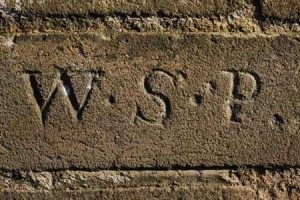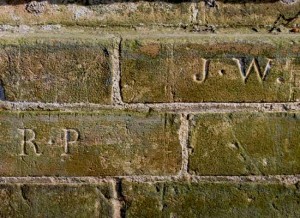18 Sept. 2013: Working lives of farm servants and maidservants
Sources rarely tell us about the daily lives of labouring people in rural areas in the 18th century. Farmers’ diaries, where they survive, more usually log the progress of the crops and the welfare of the livestock than the movements and hours of individual members of the workforce.
Mary Hardy and her diarist nephew Henry Raven are unusual in the wealth of detail they unlock. It is from their daily diaries that the labour tables in the commentary volumes Mary Hardy and her World are compiled, which show us how many days a year were devoted to each of the myriad tasks the Hardys’ workforce had to carry out.
On Wednesday 18 September 2013 Margaret Bird will give an illustrated talk to the Mid-Norfolk Family History Society on “Working lives in the late 18th century,” in which these topics are discussed.
It will be held at the Trinity Methodist Church Hall, Theatre Street, Dereham, NR19 2EP. The fee of £2.00 goes towards expenses including tea and coffee. Everyone is welcome. Details are on the Mid-Norfolk FHS website.
 Brick tributes to the farm servants
Brick tributes to the farm servants
Farm servants did not just work on the land. In a vertically integrated business such as the Hardys’ they put their hand to malting, brewing, delivering by cart and wagon, and loading and unloading. When we read ‘Servant’ in a parish register this usually means not a personal servant such as a valet but a farm servant, who lived out and was not part of his master’s household.
 Those driving through Letheringsett on the very busy A148, or stopping off to visit the King’s Head in the village centre, may not realise that they are passing tributes in brick to a loyal and hard-working workforce.
Those driving through Letheringsett on the very busy A148, or stopping off to visit the King’s Head in the village centre, may not realise that they are passing tributes in brick to a loyal and hard-working workforce.
When Mary Hardy’s son reclad the tall tun room in flint and brick in 1814 each member of the workforce had his initials deeply incised on a brick which he then laid close to the foundations along the west wall. Just some of these initials are seen on this page; only some of the names have been identified.
 W.G. is William Girling, who died in 1824 aged 39. He spent all his working life with William Hardy junior, having joined in 1800 as the family’s 29th young farm boy (Mary Hardy records 37) and later progressing to brewer’s clerk. He was probably the innkeeper’s son from the Crawfish at Thursford.
W.G. is William Girling, who died in 1824 aged 39. He spent all his working life with William Hardy junior, having joined in 1800 as the family’s 29th young farm boy (Mary Hardy records 37) and later progressing to brewer’s clerk. He was probably the innkeeper’s son from the Crawfish at Thursford.
G.P. is George Phillippo (d.1842 aged 78). In 1801 he and his Whissonsett-born wife Margaret, née Skinner, moved to Letheringsett Hall Farm where he became William Hardy junior’s farm steward. Their son William Skinner Phillippo (1806–68) was eight when he laid his brick, W.S.P. The family, like so many at the time, was mobile, the Phillippos moving later to Barney; some returned to Whissonsett for burial.
 J.W. is John White (d.1839 aged 79), son-in-law of the Hardys’ long-serving maltster and thresher John Ramm. John White also served as their maltster.
J.W. is John White (d.1839 aged 79), son-in-law of the Hardys’ long-serving maltster and thresher John Ramm. John White also served as their maltster.
This was presumably the best way William Hardy junior could think of to memorialise his men. His tribute has so far lasted 200 years.
On the other side, facing into the brewery yard, William had a more private ceremony in 1814. His initials and those of his future wife Mary Raven (1780–1846) are set together at the foot of the east wall. They married five years later.

